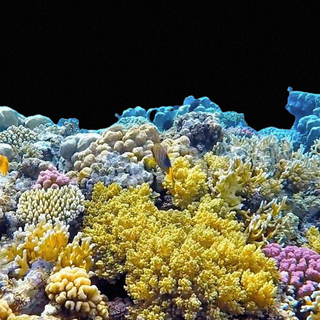
How One Country ‘Modified’ Its Weather to Create Artificial Rain and Lower Pollution
The cloud seeding technique “improves a cloud’s ability to produce rain or snow by artificially adding condensation nuclei to the atmosphere.”

Imagine the number of young couples entering their nuptials amid the ongoing off-season rainfall who would’ve been elated to learn that there is actually a technique for humans to control the weather. This year, China decided to “modify” the weather in its national capital “to ensure a smooth and balmy centenary celebration” of its ruling party.
Yesterday, the South China Morning Post (SCMP) reported on a study that concluded China had used a weather modification technique — called “cloud-seeding” — to clear the skies and lower air pollution ahead of the celebrations in June. The study was published in Environmental Science, a peer-reviewed Chinese journal.
Clouds are constituted by “tiny water droplets or ice crystals that form when water vapor in the atmosphere cools and condenses around a particle of dust or salt. Without these particles, known as condensation nuclei, raindrops or snowflakes cannot form and precipitation will not occur,” an explainer by Desert Research Institute states. Cloud-seeding essentially “improves a cloud’s ability to produce rain or snow by artificially adding condensation nuclei to the atmosphere.”
Reportedly, people residing in the southwest part of Beijing admitted to seeing a large number of rockets flying up. “It was very loud, like thunder — and it went on for a very, very long time … it was like a war zone… Then the rain came down, it was quite heavy,” a resident who witnessed this told SCMP on the condition of anonymity. Some even came across debris from the rockets strewn around their homes later.
These rockets are speculated to have been used to trigger rainfall — by carrying silver iodide into the sky. When silver iodide is added to clouds, “water droplets cluster around the particles, modifying the structure of the clouds and increasing the chance of precipitation,” The Guardian had explained in March.
Related on The Swaddle:
Fleeing Cyclones and Floods for 23 Years: Can Sundarban Residents Outrun a River?
What makes this science fiction-like stream of events even more believable is that Beijing’s State Council had previously stated its aim to have developed at least one weather modification technique in just a few years — 2025 is the target they have set for now. The researchers also noted that weather authorities in China have been attempting to predict the movement of humid air — using artificial satellites, mobile radar stations, and even planes — to an extent where they can control when and where it rains.
If the fact that can we can control the weather seems too good to be true, that’s probably because it isn’t. Not because it’s not feasible, but because experts are worried that large-scale employment of the technique could result in disrupted weather patterns elsewhere.
However, it’s not the first time humans attempted to exercise a certain degree of control over the weather. In the U.S., a private utility company has reportedly been using cloud-seeding to supplement its hydroelectric power production for nearly two decades.
“Flying across the cloud tops, the aircraft dropped flares that burned as they descended, releasing plumes of silver iodide that caused ice crystals to form and snow to fall over the mountains… In the spring, that snow will melt and run downstream, replenishing reservoirs, irrigating fields, and potentially generating hundreds of thousands of additional megawatt-hours of carbon-free hydropower for the state,” The Independent reported.
This year, the U.A.E., too, conducted 126 instances of cloud-seeding in the summer. “We only enhance the amount of rain; we are not creating floods. Even some clouds we avoid seeding, because it would be too dangerous for the aircraft to penetrate them,” Sufian Farrah, meteorologist and cloud seeding expert at the National Center of Meteorology in the country, had told Wired.
Related on The Swaddle:
India Has No Urban Drought Policy, Leaving Cities Unprepared, Vulnerable
At the cost of sounding more dystopian, reportedly, parts of the U.S. are considering cloud-seeding as an option to deal with extreme climate events like droughts that have rendered people desperate to access clean water for drinking, so that they can live; and for farming, so that they have a livelihood.
“There has been very little relief and this could well be a precursor to what can be expected for the west in the future… It’s kind of scary to think that way,” Brian Fuchs, a climatologist at the National Drought Mitigation Center, told The Guardian.
So far, cloud-seeding has not been found to threaten the environment, some sources note. However, studies have failed to attest to their usefulness either. “[R]unning control experiments in cloud-seeding studies is a challenge: once a cloud is treated, you can’t measure how much it would have rained or snowed if left unseeded,” an article on Chemical and Engineering News, explains.
Where does India stand in all this? Well, the first time the country had experimented with cloud-seeding was in 1952. Subsequently, reports suggest Tamil Nadu had attempted it on different instances during the 1980s and 90s to deal with severe droughts — with Karnataka and Maharashtra trying it in the 2000s.
“While the Union Ministry of Earth Sciences has no plans to have a national program on cloud seeding, it has already spent Rs 45 crore on research in 2018. In 2019, the work will continue, costing a total Rs. 100 crore,” Mongabay had reported.
Devrupa Rakshit is an Associate Editor at The Swaddle. She is a lawyer by education, a poet by accident, a painter by shaukh, and autistic by birth. You can find her on Instagram @devruparakshit.
Related


How Scientists Are Using a Stock Market Theory to Save Coral Reefs
